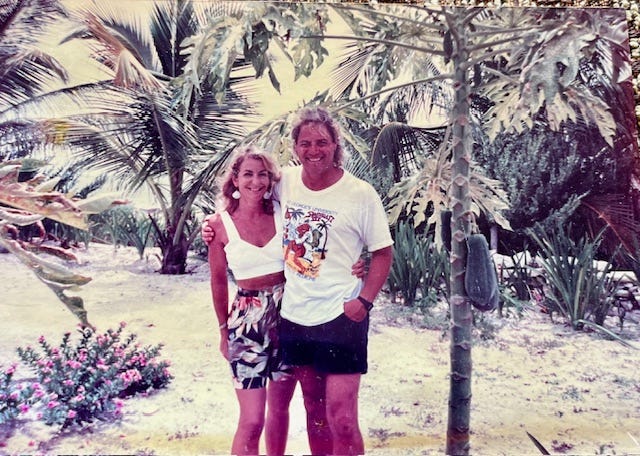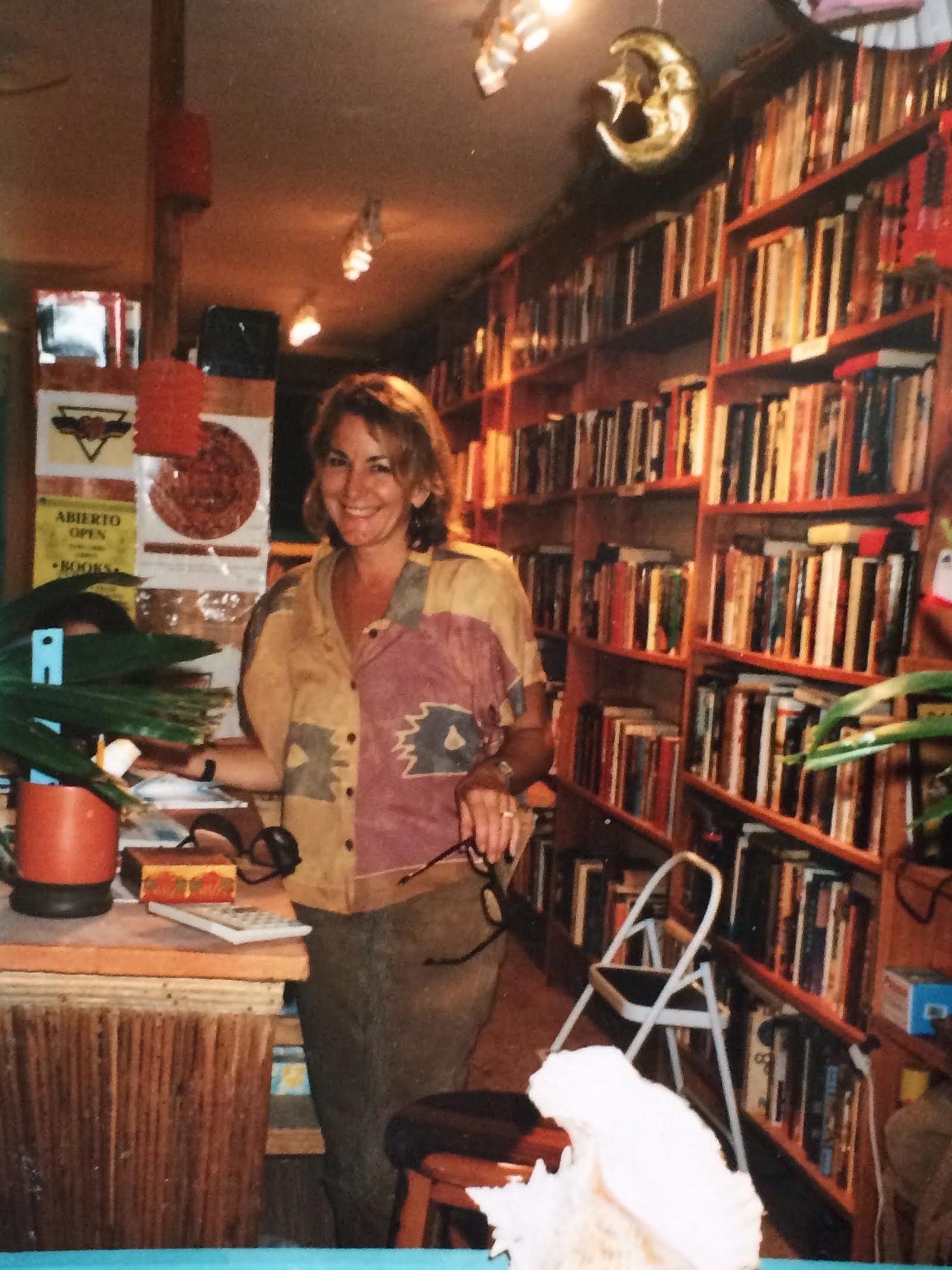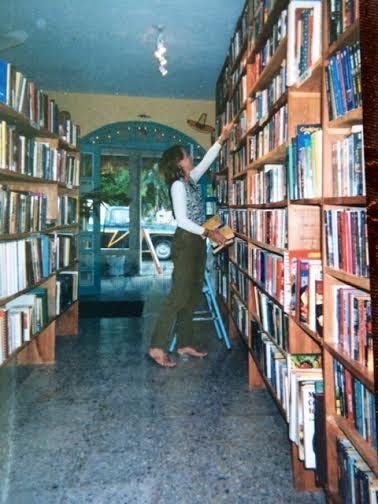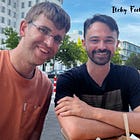🌍 Traveler Spotlight #5: Jeanine Kitchel
The author of Where the Sky is Born and the Mexico Soul Substack talks with me about Mayan culture, moving to Mexico, and expat life
Hey friend,
Welcome back to another edition of Itchy Feet, a Travel-Inspired Newsletter.
Thanks for being here.
This week’s edition has some extra sauce!
Why?
This post is the newest edition of my Traveler Spotlight series. In this series, I have an exclusive interview with expert travelers, learn their stories, and share their wisdom with you!
This week, my friend and fellow Substack travel writer
was kind enough to talk with me.If you’re unfamiliar with her writing, Jeanine has a very successful Substack newsletter called Mexico Soul.
It’s packed with interesting stories and facts about Mexico and Mayan culture. You also get to read about how she and her husband Paul moved from the US to Mexico.
They built a new expat life (and a house!) together.
Jeanine is also an accomplished author. She’s written both fiction and non-fiction.
Her travel memoir, Where the Sky is Born: Living in the Land of the Maya, is the inspiration behind her newsletter.
Jeanine continues to inspire me both as a traveler and writer.
It’s an honor she was willing to talk with me.
I learned a lot from our interview and I’m sure you will too.
Ok, let’s get to it!
Reading time: 8 minutes
A recurring theme in your work involves Mexico and Mayan culture. When did your interest in these topics start?
I’ve loved Mexico since I traveled the Gringo Trail in my 20s, heading with a boyfriend by bus from the border at Tijuana down to a fishing village south of San Bas, in Nayarit.
We’d stopped at various places with no destination in mind and found Santa Cruz where we stayed two months.
He was a musician and was lured into playing guitar in a local band on weekends.
Fast forward—After I met Paul, my husband, we traveled to the Mexican Caribbean, Isla Mujeres near Cancun, in the mid-1980s. I wanted to see the Maya pyramids that were close by.
On your website, you describe yourself as a “Mayaphile.” What do you find most interesting about the Maya?
When I first heard about the Maya civilization, it was an anomaly—a sublime civilization that lasted a thousand years, made up of peaceful priests and stargazers who studied time and had no wars or sacrifices.
But after the Palenque Roundtable in 1976, a conference of scholars, archeologists and students at the pyramids in Chiapas, the Maya hieroglyphic code was broken.
It was an astounding breakthrough.
Not long afterward, the real message the Maya had written on their stela revealed their true history—Human sacrifice was part of their make-up as were wars, in which numerous city-states regularly battled for dominance.
Is there a misconception most people have about the Maya?
The biggest misconception is that the Maya civilization is gone.
In fact, there are eight million Maya spread throughout Mexico and Central America.
Mexico and Guatemala have the largest populations of Maya today.
You and Paul retired and built a home, Casa Maya, in Puerto Morelos. What advice do you have for anyone looking to buy property in Mexico?
Be flexible, find a reputable realtor, and read all fine print.
Make sure the owner can legally sell to you.
As I write in my memoir, our first two land deals fell through, one because the Mexican government seized our Playa del Carmen beachfront lot through eminent domain as they wanted the location to build a new ferry dock to Cozumel. (which never materialized).
Our contractor negotiated with the governor’s office to find another piece of land in what is now the Rivera Maya, but the new property, our second attempt, was remote and extremely large.
The infrastructure costs alone were impossibly expensive. He returned our deposit and we went on to our third piece of beachfront property.
The lot in Puerto Morelos once had a beautiful home on it but it was demolished by Hurricane Gilberto.
The previous owners couldn’t face rebuilding, and the lot with the demolished house was put up for sale.
We bought it, had the house bulldozed, and used it as part of the foundation.
I’ve been a fan of your Substack, Mexico Soul, for a while now. I didn’t know until now you also have a Mexican thriller book series. The covers are beautiful. Can you share details more about these books?
Thank you, Daniel. I wrote my memoir a while ago.
I wanted to document it all because buying land, building, then moving to Mexico and opening a bookstore was a real adventure.
After writing non-fiction, I wanted to try my hand at fiction.
Things were beginning to change on the coast, not always for the better. It was growing quickly, the environment was being taxed, building codes were ignored, and plain and simple, there were so many stories to tell.
With the bookstore, everyone came in to chat and chisme, gossip. I heard everything.
I felt I could write fiction and in that way, write a tempting tale and still address important topics—environmental issues and morality.
I call my genre Narco Noir.
I write thrillers set in the fertile stomping grounds of the Yucatan.
The covers are art pieces painted by Todos Santos artist, Jill Wyatt Logan, who generously allowed me to use her art for my covers. Book One in the trilogy is titled Wheels Up: A Novel of Drugs, Cartels and Survival. Book Two: Tulum Takedown. Book
Three is still being written.
Note: Learn more about Jeanine’s books here
As a fellow writer, I’m impressed you’ve written multiple books and maintain an active newsletter. How do you keep disciplined to write?
Mexico Soul posts every Friday—so I have the whole week to write and edit.
In my earlier life, I was a journalist and got used to deadlines, plus I have running files on many aspects of Mexico, Maya history, culture, travel, and art.
At our bookstore early on, Puerto Morelos had few tourists.
Some days I had hours to kill, so as an avid reader—I read!
Plus I was lucky to meet so many locals who had oral histories of the area, from way back.
You and Paul also opened a bookstore called Alma Libre Libros in Puerto Morelos. That’s very interesting. Was it hard as a foreigner to open a business in Mexico?
Yes. The build-up, to collect worthwhile books—it’s a Buy-Sell-Trade store—was three years.
We had to get all our ducks in order before we could jump ship from our jobs in San Francisco, sell our house, etc., so we had that time.
We got the idea, took a class, collected used books, so much more.
Then getting to Mexico with books enroute, well, I write about it in my memoir and in Mexico Soul, where I’ve condense-serialized the memoir.
We needed to get an immigration attorney, a standard attorney, an accountant, yada yada yada.
And there were always small upsets here and there. I won’t even go into the time our accountant ‘forgot’ to make a 2000 peso payment to immigration to renew our work permits—and what ensued.
But I do write about it in the memoir! It’s pretty unforgettable.
Refer one friend: Get a Free Solo Travel Check-list PDF
Refer three friends: The PDF, plus a Mini City Guide (Any city you choose)
Refer six friends: both of these, plus a free 30-minute travel planning call with me
Not too shabby, right?
Use this link to begin referring folks to Itchy Feet. Thanks for helping this publication grow!
I love independent bookstores. Do you also host events?
We sold the bookstore when we wanted to re-retire, so no.
But the store is still going strong. The new owners are fabulous and it’s quite a popular spot in Puerto Morelos.
Is Puerto Moreles still a sleepy fishing village or has it changed since you moved there?
It’s large now.
There were probably a thousand people when we first moved to PM and a handful of foreigners.
Population now is around 20k.
Many all-inclusives and hotels, supermarkets, a marina, tons of restaurants. But people still rave about it.
Somehow even with growth, it’s managed to keep its low-key vibe.
What is the best and worst part of living in Mexico?
As an expat, at times you find yourself flailing, maybe due to the immigration process or some other regulation you have to deal with.
Things move slower and usually that’s a good thing.
Patience is learned which is probably the best thing.
What’s the go-to dish you must try when visiting Puerto Moreles?
Since Puerto Morelos is a fishing village, order a whole fried fish at a local restaurant.
You’ll never find fresher.
Because QRoo is a new state (1974) it’s a combo of all of Mexican cultures, so there’s not one signature dish.
I’d also suggest two Yucatec favorites: Salbutes—tiny fried tortillas with shredded turkey, lettuce, pickled onion, avocado, and Panuchos, similar but with addition of refried beans and usually shredded pork rather than turkey.
Delicioso!!
Thank you, Daniel, for this opportunity to share my Mexico story! Mil gracias!
Thank you Jeanine for your time and for sharing your travel wisdom!
I an even bigger fan after our conversation.
Thank you for reading this newsletter. I highly recommend that you read her newsletter. You can sign up here.
More ways to learn about Jeanine’s work
Have a great weekend and thanks for reading this newsletter. Another edition of Itchy Feet
is happening next week! Get ready for some NEWS.
I appreciate you.
Much love,
-Daniel
Instagram / X / YouTube / Travel Planning
PS: Here’s a little more if you’ve made it this far and want more fun interviews to read!
















What an informative conversation between two of my favourite 'Substackers' - Jeanine sharing her love for Mexico and the Maya, and Daniel detailing travel essentials and experiences. Well done to you both! :-).
Fascinating conversation. A lot to learn from Jeanine.
One thing I particularly like is the evident love for Mexico, despite whatever challenges come with being an expat there. Shows we just choose places, just like people, and we decide to make a life there.
Thanks for this, Daniel. It's informative, inspiring, and refreshing.